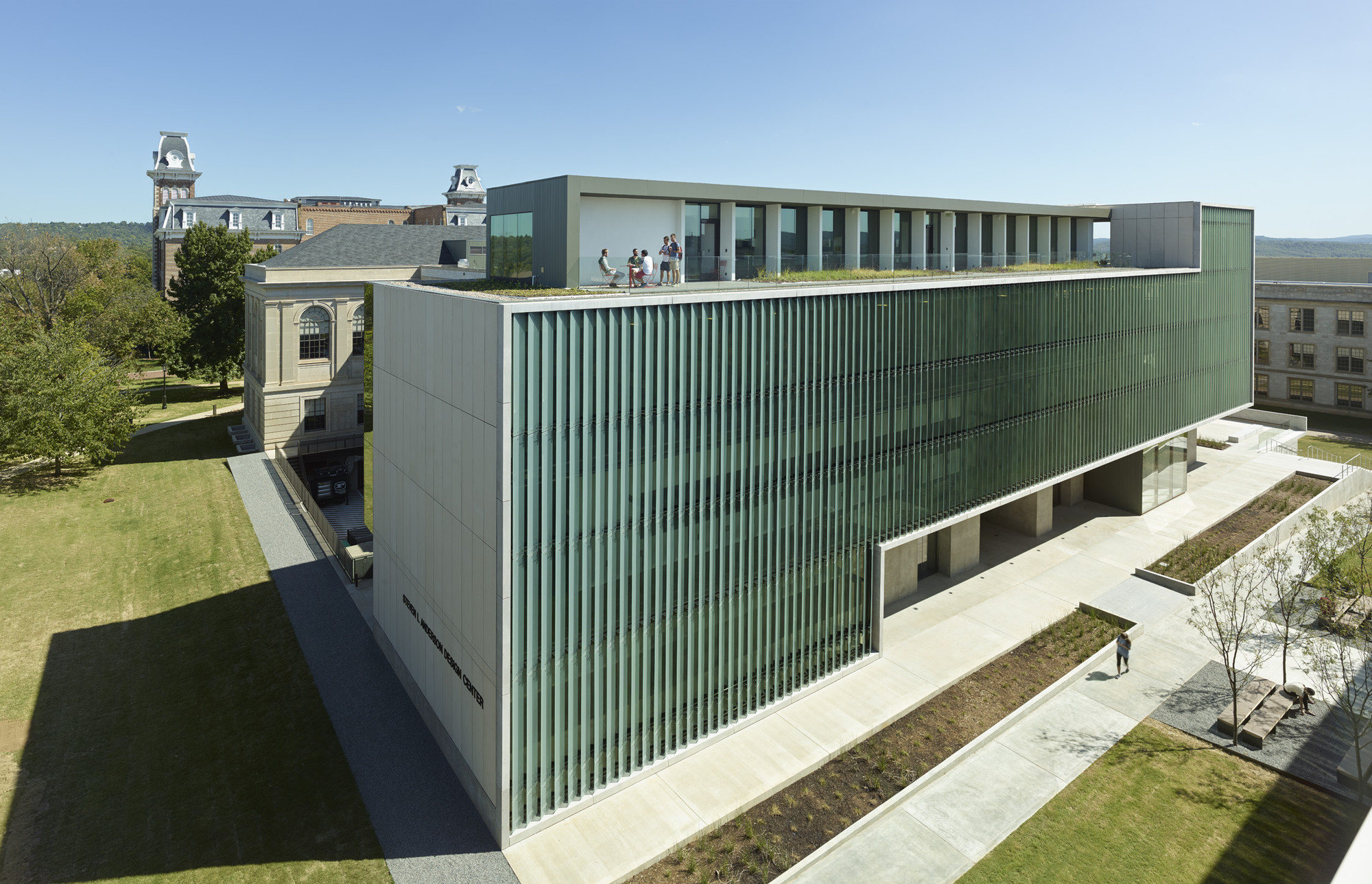Architizer is thrilled to announce that the 2026 A+Product Awards is open for submissions! The clock is ticking — get your products in front of the AEC industry’s most renowned designers by submitting today.
Redefining enclosure, buildings with multi-layered envelopes create distinctive transitions and interior conditions through their boundaries. Thick masses and voids shape spatial experience and perception, defining energy performance, view and light. Mediating the surrounding context and heat gain, double glass façades can reimagine how people connect with place. These envelopes can be formed as two distinct elements or as multiple layers of combined glazing for a performative or visual affect.
Double glass façades combine different materials around unique framing, installation methods and structural support. We’ve drawn together a collection of double glass façades that explore innovative building techniques and create layered skins. Discover how each project utilizes mullions, spacing and connection details to define opportunities that singular façades could not address.


Mont de Marsan Mediatheque by archi5, Mont-de-Marsan, France
Glass Façade by Pilkington
The Marsan Media Library was designed as a cultural symbol within its urban site. A covered square with reflective glass façades is surrounded by continuous landscape. Each side of the building adapts to the direction it faces, while interior functions are organized along an open floor space. The various functions are formed around this open floor space, and it is the first patio used by a Media Library as an open reading room.
The glass façade was created with a double skin to maintain visual continuity and diffuse daylight evenly. The grassy exterior hill surrounds the building and was made to draw the eye upwards towards the reflective and transparent glass façade. The exterior glass mirrors the surrounding barracks with occupiable space between the inner and outer layers of glazing. As a space of exchange and discovery, the library acts as a distinctive gathering area that embraces its locale.


Vol Walker Hall and the Steven L. Anderson Design Center by Marlon Blackwell Architect, Fayetteville, Ark. Photos by Timothy Hursley.
Glass walls by ACE Glass Construction and Viracon
The new addition of the Steven L. Anderson Design Center features studio and critique spaces as well as an auditorium and roof terrace. Careful material detailing honors the building’s historic counterpart while establishing a powerful language of its own. A large fritted-glass brise-soleil was used to screen western sunlight and illustrate construction methods, and in-turn, creating a layered façade that’s seemingly straightforward and striking.
The project features more than 17 different glass make-ups in a wide array of system types, including 6,000 square feet of the Kawneer 1600 System 2 veneer structurally glazed curtain wall with 140 vertical glass fins made with Viracon V175 silkscreened glass. This is combined with OKALUX’s light diffusing glass and interior glazing consisting of 1/2-inch clear tempered four-sided structural glazed directly to steel framing.


Museum of Contemporary Art by Adjaye Associates, Denver, CO, United States
Double glass façade made with Glass Light Limited
The Museum of Contemporary Art in Denver was designed to great a distinct presence within the civic landscape. The main façade features a slight angle visible as approached from downtown. Three vertical stacks act as separate gallery spaces connected by woven circulation. Above, a garden and rooftop restaurant provide a space to enjoy the city. The exterior curtain wall is clad in a gray glass that’s etched on the inside.
Double glass façades make up over 50% of the building’s exterior, designed with an interior sheet of Monopan, a honeycomb-like composite material, and an insulating glass curtain wall. As Adjaye Architects states, “the cavity between the exterior façade and the Monopan is a plenum, which reduces cooling loads and serves as a relief chamber for air exhausted from occupied space.” The thickened façade filters daylights and glows atmospherically at night.


JTI Headquarters by Skidmore, Owings & Merrill LLP ( SOM ), Geneva, Switzerland
Double glass façade made with Josef Gartner GmbH
The JTI Headquarters draws on references from the site’s context, including Lake Geneva and the Alps. The project’s Closed Cavity Façade system was developed as a unique unitized curtain wall responding to the requirements of European Energy Directives and the Swiss Minergie sustainability rating.
The CCF system consists of triple glazing on the inner layer and single glazing on the outer, forming a cavity that is combined with a roller blind. For more details on the CCF system, check out SOM’s detailed explanation on Architizer.


The Crystal by Schmidt Hammer Lassen architects, Copenhagen, Denmark
Double glass façade made with Grontmij I Carl Bro A/S
As a transparent, geometrical glazed form, The Crystal takes on the shape of a visually light structure above the surrounding plaza. Designed around interaction, the project forms a subtle connection between the formal architecture of the Glyptotek Museum of Ancient and Modern Art and the waterfront area. The building’s striking glass façade is supported from within by a rhombic construction system.
The Denmark office utilized a triple-layered inner glass façade for thermal insulation, and the envelope features integrated solar screens with a subtle silk-screen fritted design. The façade reflects daylight and the surroundings. The outer layer of glass opens to fresh air, creating a naturally ventilated façade that regulates the building’s interior temperatures.
Architizer is thrilled to announce that the 2026 A+Product Awards is open for submissions! The clock is ticking — get your products in front of the AEC industry’s most renowned designers by submitting today.

 JTI Headquarters
JTI Headquarters  Mont de Marsan Mediatheque
Mont de Marsan Mediatheque  The Crystal
The Crystal  Vol Walker Hall and the Steven L. Anderson Design Center
Vol Walker Hall and the Steven L. Anderson Design Center 


